.
Living in trailer homes is largely an American culture, but the history of mobile homes originated in Europe
The first trailer home owners were the travelling showmen who spent most of their lives on the road. Instead of pitching tent wherever they went, they had horse-drawn wagons where they cooked, ate, and slept. Later, around the middle of the 19th century, these caravans were adopted as living quarters by the Romani people, commonly called the Gypsies. These people originated from northwestern India, a country their forefathers left some 1,500 years ago and settled in different parts of the world, but mostly in Europe and Mid-West Asia. In the last hundred years or so, the Romani people have also spread to the Americas.
The Romanis call their wagons vardo, originating from the Ossetic word “vurdon” for cart. They are smaller than the larger transport wagons the circus troupes used, and thus required fewer horses to pull. They are often highly decorated, intricately carved, and brightly painted. Some are even gilded.
The Gypsies took great pride in their homes on wheels, but as the vardo evolved and became more ornate, they became more a showpiece than practical sleeping quarters. Indeed, few Gypsies actually slept in them, preferring instead to sleep in tents or beneath the wagon itself. “They also lacked sentiment in times of need, having no hesitation in selling them or ‘chopping’ (exchanging) them for something else,” writes historian Janet Keet-Black. Yet, when the owner died it was the custom to burn all his belongings, including the vardo, for the Romanis believed that a dead person’s possessions should not be sold. Money and jewellery, however, was left to the family.
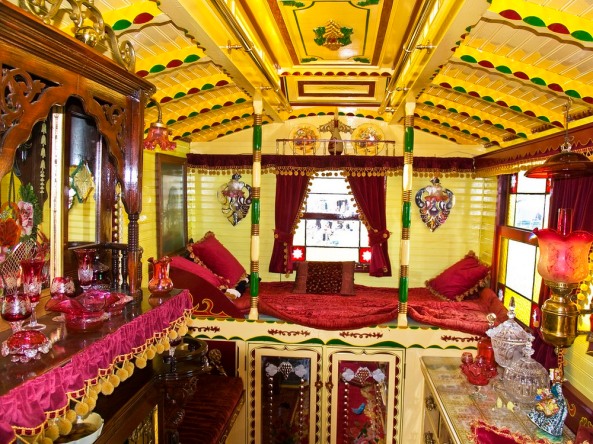
Vardos proliferated in the late 19th and early 20th century. This period is often affectionately called “the wagon time” by Romanichal travellers. The wagon time lasted some 70 years, when a combination of economic factors and social upheaval, not to mention the First World War, brought the practice to an end.
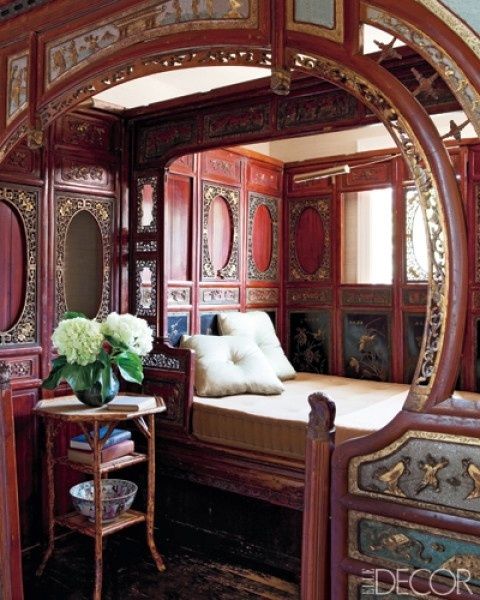
Today, there are only a few original vardos in existence, mostly in museums and in the hands of private collectors.
Vardos are categorized into six main styles—Brush wagon, Reading, Ledge, Bow Top, Open lot, and Burton. The general design evolved over time and were named after the home’s owners, for their traditional style (Ledge), for the town of its construction (Reading), or for the name of the builder.
Vardo: Τα τρομερά τροχόσπιτα των τσιγγάνων
Η διαμονή σε ρυμουλκούμενα ανήκει κατά κύριο λόγο στον αμερικανικό πολιτισμό, αλλά η ιστορία των μετακινούμενων κατοικιών προέρχεται από την Ευρώπη.
Οι πρώτοι ιδιοκτήτες ρυμουλκούμενων σπιτιών ήταν οι ταξιδιώτες που είχαν πέρασει το μεγαλύτερο μέρος της ζωής τους στο δρόμο. Αντί να στήνουν σκηνή οπουδήποτε πήγαιναν, είχαν βαγόνια με άλογα, όπου μαγείρευαν, έτρωγαν και κοιμούνταν.
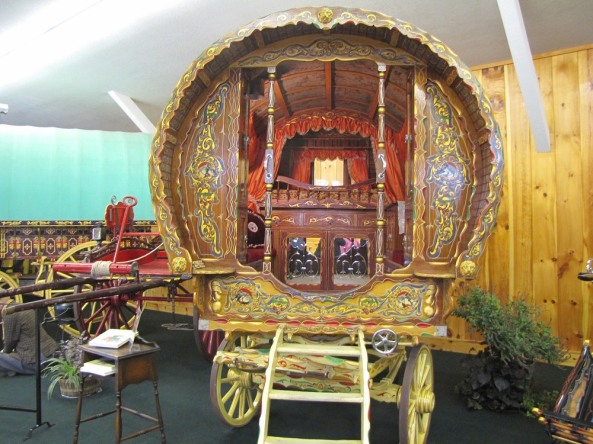
Αργότερα, γύρω στα μέσα του 19ου αιώνα, αυτά τα τροχόσπιτα υιοθετήθηκαν ως κατοικίες από τον λαό των Ρομά, κοινώς αποκαλούμενοι Τσιγγάνοι. Αυτοί οι άνθρωποι προέρχονταν από τη βορειοδυτική Ινδία, μια χώρα που οι προπάτορές τους άφησαν πριν από περίπου 1.500 χρόνια και εγκαταστάθηκαν σε διάφορα μέρη του κόσμου, αλλά κυρίως στην Ευρώπη και τη Μέση Δυτική Ασία. Τα τελευταία εκατό χρόνια περίπου, ο λαός των Ρομά έχει εξαπλωθεί και στην Αμερική.
λέξη “vurdon” που σημαίνει καλάθι. Είναι μικρότερες από τις μεγαλύτερες φορτάμαξες μεταφοράς που χρησιμοποιούσαν οι ομάδες των τσίρκων και έτσι χρειάζονταν λιγότερα άλογα για να τις τραβήξουν.
Είναι συχνά εξαιρετικά διακοσμημένες, περίτεχνα σκαλισμένες και λαμπερά ζωγραφισμένες. Μερικές είναι ακόμη και επιχρυσωμένες.
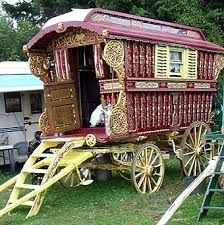
Οι Τσιγγάνοι ήταν πολύ υπερήφανοι για τα σπίτια τους πάνω στις ρόδες, αλλά καθώς οι vardo εξελίχθηκαν και έγιναν πιο περίτεχνες.
Λίγοι Τσιγγάνοι κοιμόντουσαν μέσα , προτιμώντας αντίθετα να κοιμούνται σε σκηνές ή κάτω από το ίδιο το βαγόνι.
“Επίσης, δεν υπήρχε συναίσθημα σε περιόδους ανάγκης, χωρίς κανένα δισταγμό να τις πουλήσουν ή να τις ανταλλάσουν »για κάτι άλλο», γράφει η ιστορικός Janet Keet-Black.

Ωστόσο, όταν πέθαινε ο ιδιοκτήτης, ήταν το έθιμο να καίνε όλα τα υπάρχοντά του, συμπεριλαμβανομένου του vardo, γιατί οι Ρομά πίστευαν ότι τα υπάρχοντα ενός νεκρού δεν πρέπει να πωλούνται. Τα χρήματα και τα κοσμήματα, ωστόσο, έμεναν στην οικογένεια.
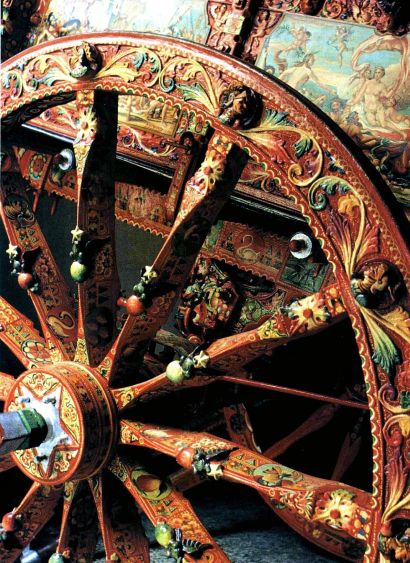
Ο χρόνος των βαγονιών διήρκεσε περίπου 70 χρόνια, όταν ένας συνδυασμός οικονομικών παραγόντων και κοινωνικών αναταραχών, για να μην αναφέρουμε τον Πρώτο Παγκόσμιο Πόλεμο, έφερε την πρακτική στο τέλος.
Σήμερα υπάρχουν μόνο λίγα Vardo, κυρίως σε μουσεία και στα χέρια ιδιωτών συλλεκτών!
https://www.amusingplanet.com/2019/03/vardo-opulent-caravans-of-gypsies.html







Good morning Efi! Have a great Sunday! 🤗🤗
LikeLike
Good morning Ribana!! After many days with rain today we have a sunny clear day and i am thinking to enjoy it!! Kisses!!!
LikeLike
This was so informative – and how cool to see the show that is similar to “tiny houses” here in States –
I liked how ornate these small homes on wheels became – and found it interesting that they would sometimes sleep in a tent or below the home – to figure!
And while this idea of living so small (yet grand) has some perks – when storms come – I am very glad to have a regular house
LikeLiked by 1 person
A fascinating collecton of photos, and an equally fascinating story about the Gypsy Wagons…
LikeLiked by 2 people
Here she is lol!!! Kisses!!!!
LikeLike
Thank you Efi, oh what a glorious dancer, and the her finilew was
Spectacular
LikeLiked by 1 person
Kalimera Efi mou…what an interesting post!! Kali Kyriaki na exeis…filiaaa polla
LikeLiked by 1 person
Φιλάκια Σοφούλα μου περιμένω το γλυκό αύριο χαχα!!!
LikeLiked by 1 person
Kalimera, Efi mou trexo kai den ftano..
LikeLiked by 1 person
Mη τρέχεις .. θα φτάσεις εκεί που θες να πας πρώτα … και μετά τα άλλα με την ώρα τους χαχα!! Φιλάκια και καλή δύναμη!!!!
LikeLiked by 1 person
hahhahahahhahaah plaka exeis 🙂
LikeLiked by 1 person
Εμ δε μου είπες ότι έρχεται η μανούλα σου …. τρέχα τρέχα !!!! Καλώς να τη δεχτείς !!!!!
LikeLiked by 1 person
Amazing!
LikeLiked by 1 person
Kisses!!!!
LikeLiked by 2 people
Thanks 🙏
LikeLiked by 1 person
Υπέροχα τα τροχόσπιτα των Gypsies!
Ανεκπλήρωτο όνειρο να έχω ένα τροχόσπιτο απ΄ αυτά τα σούπερ οργανωμένα, μια και είμαι (πολύ) καλομαθημένη! 😉
Καλή μας Κυριακή με πολλά ταξιδιάρικα ΑΦιλάκια! 🙂
LikeLiked by 1 person
Τροχόσπιτο δεν έχω να σου κάνω δώρο αλλά σου στέλνω ένα τραγουδάκι υπέροχο!! Καλή εβδομάδα για αύριο μαγισσούλα!!!! Φιλιά!!!
LikeLiked by 1 person
Fascinating. I think we have one of those in a local field
LikeLiked by 1 person
I am waiting photos!!!
LikeLike
I think it is the rounded one in this post: https://derrickjknight.com/2019/01/28/in-the-bright-morning-light/
LikeLiked by 1 person
Yes I remembered it now !!! Thank you so much Derrick!!! Good night from Athens!!!
LikeLiked by 1 person
Thankyou for the informative post.
LikeLiked by 1 person
My pleasure Athena!!!
LikeLiked by 1 person
Fascinating! 💟
LikeLiked by 1 person
Στις ΗΠΑ, όλο το χρόνο άνετα διαμερίσματα. Ποιο κομψό και πλούσιο εξοπλισμό.
LikeLiked by 1 person
Yes, please! They’re fabulous 🙂 🙂
LikeLiked by 1 person